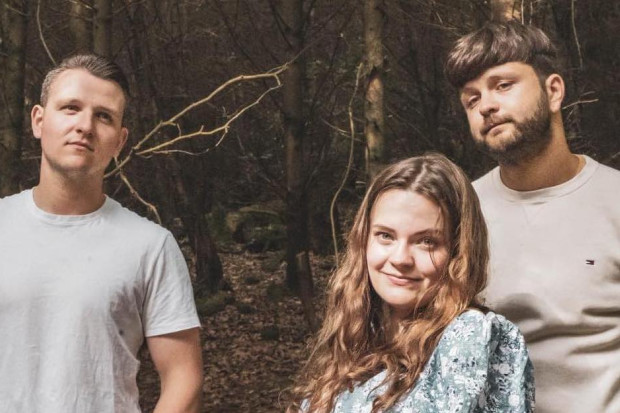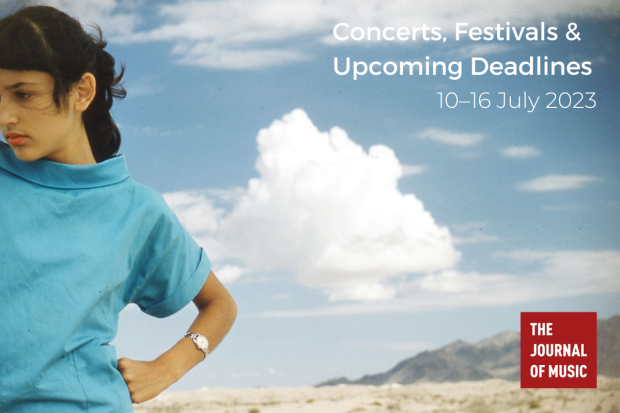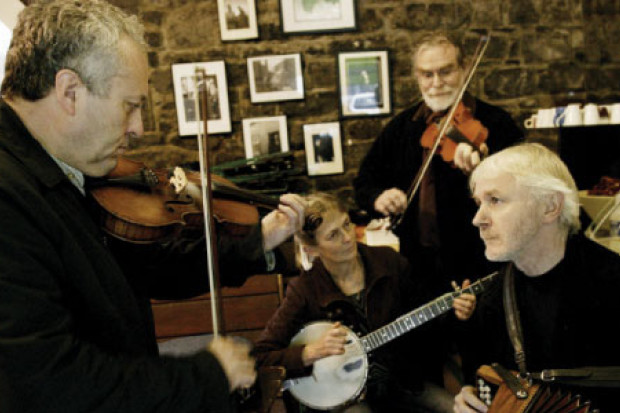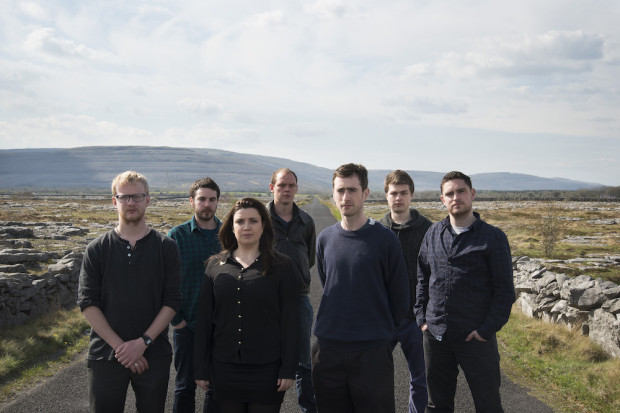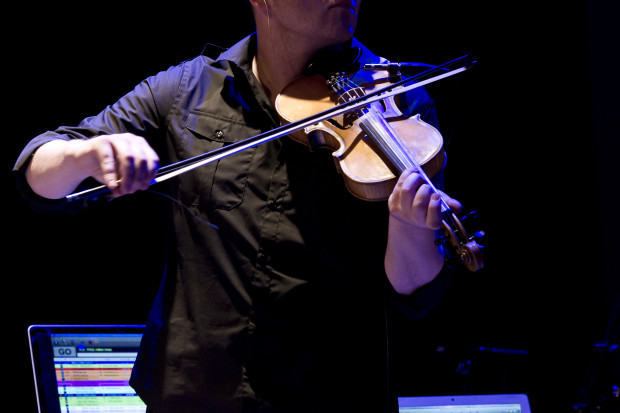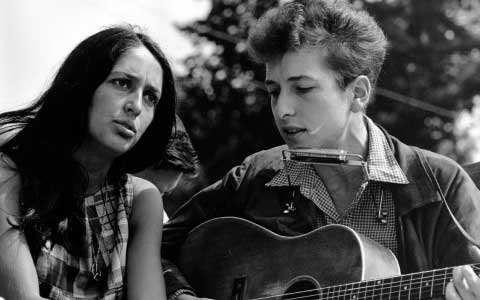
No Reviving What Never Died
‘Folk music’s common nobility of spirit is rooted in its origins,’ says David King Dunaway, ‘in the peoples of a country and its landscape. The songs are carved from the contours of the land and the primordial experiences of communities.’ This holds true, for most people, and for most of the time, when they think about folk music. The art-form needs, for its pride and integrity, to be unencumbered by anything but its spirit and its will to go on, unchangeably, through the ages. ‘Whereas mural painters need walls, dancers need floors, sculptors need warehouses, novelists need printers and composers need symphonies – songwriters are lucky,’ says Pete Seeger. It’s as natural as breathing. But Dunaway, in an important and excellent new book, co-authored with Molly Beer, has uncovered the true life of folk music in North America as it progressed through the world-altering twentieth century. This is the era when folk music made its impression as an urban art-form. Looking through the index of Singing Out – An Oral History of America’s Folk Music Revivals, song titles sit beside the names of radical newspapers and magazines, TV and radio shows, political rallies, and iconic venues and festivals. And songwriters and performers figure with politicians, activists and martyrs.
‘Folk music revival’ is a problematic term, of course – ‘It’s best said in the beginning that there’s no reviving what never died,’ Dunaway says in his introduction. But what revival comes to mean in Singing Out, through the transcripts of over thirty years of interviews with the people who were there and at the times that were important, is a period in which folk changes hands and engages with different strata in society; when it becomes politically combustible as competing voices struggle with identity and emancipation.
Dunaway and Beer identify three revival periods. The first is during the early years of the twentieth century, when a distinctly literary impulse takes the songs of the country into the domain of intellectuals, researchers and collectors, ‘inspired by the nineteenth-century German Romantics, such as the brothers Grimm, Herder, Hauptmann and even Goethe’. The second revival is during the 1960s when the United States, after the paranoia of McCarthyism, came of age and sought a way to remove the slaveries of its own ideology. The third is now, post 1989, with the dissemination and cohabitation of the world’s limitless folk identities through new media. The contributors to this most recent history-in-the-making are determined to underline the democratic force of contemporary borderless communications, but it’s hard not to feel that the powder keg atmospheres of Washington Square Park in the 1960s or the shipyard disputes and trade union rallies of industrial America in the 1930s can ever be matched in terms of raw potential.
There was a time when folk music was on everybody’s mind. Before the Second World War, Theodore Roosevelt wrote an introduction to the collection Cowboy Songs and Other Frontier Ballads:
There is something very curious in the reproduction here on this new continent of essentially the conditions of ballad-growth which obtained in ‘medieval’ England; including, by the way, sympathy for the outlaw, Jesse James taking the place of Robin Hood.
In the 1950s, concern for this ‘very curious’ activity was expressed in typically reactionary tones by the John Birch Society’s bulletin American Opinion: ‘Along with the handclapping, the guitar strumming, the banjo picking, the shouting and the howling, comes a very subtle, but highly effective, presentation of standard Communist Party propaganda.’ And when Martin Luther King Jnr, in 1963, spoke through the words of the old Negro spiritual (‘Free at last! Free at last! Thank God Almighty, we are free at last!’) Dunaway sees a pivotal moment: ‘It was not just a call to arm but a radical call to song.’ The establishment periodical Newsweek said during this period: ‘history has never known a protest movement so rich in song as the civil rights movement. Nor a movement in which songs are as important.’ Folk music had irretrievably left the ‘romantic mist’ of its pre-history and becomes identifiable as a thoroughly modern and distinctly urban means of communication.
The twentieth century was the age of the miniature and the explosive entreaty. Pamphlets, bulletins, placards, newsreel clips and photographs (truth compressed into a fraction of a second) impress themselves on our perception of recent history and have completely usurped the epic narrative forms of previous generations. Think of the folk song as the composite parts of a Shakespeare play – the dialogues, soliloquies, the distinct passages of verse, prose and song – released from their historical and structural confines and unleashed as a demand for action. A folk song can deliver an epic narrative of countries and peoples, a personal tale of love and loss, or a political manifesto, all in a matter of minutes, or on a single side of paper, and with a cast of only one. And this makes the art-form, surprisingly perhaps, as apt for the playing-out of tensions within the post-industrial world as any other. Reading Singing Out it becomes plain that folk music wasn’t merely synchronous with the new print media of the last century, it was complicit in its development and proud to accept its use as naked propaganda. Magazines such as People’s Songs, Broadside and Sing Out! appeared and claimed an important place in the psyche of the cities’ counter cultures, and the song itself went to print and claimed permanence in collections such as Hard Hitting Songs for Hard Hit People, The People’s Songbook, Little Red Song Book and even in the Brecht-Eisler Song Book, where, to the horror of the establishment, latent European revolutionism was introduced to the libraries and then, inevitably, to the music halls and theatres of New York and Los Angeles.
By the end of the 1960s, when folk musicians found that they had truly broken through the (arguably self-imposed) barriers to gain major media attention (Bob Dylan was an instant star of the airwaves, singing as easily in TV studios as at folk music conventions), the profile of the art-form had transmogrified, for better or worse, and came to be seen by some of the more traditionalist members of the folk movement as a grotesque reflection of its former self. The classic concepts of folklore, such as anonymity, age, oral heritage, tradition, had given way to personality, youth, direct action and the compromising degeneracies of the mass media. And, of course, when an expression as powerful as this is in official ‘revival’, the play between the state and the creative artist becomes as colourful as any in history.
There were times of great generosity and understanding. Roosevelt’s administration funded a ‘community-building through music programme’ and supported, as a matter of national self-understanding, the Archive of American Folk Song; but, of course, these programmes only understood music as a tradition of the rural poor. When the power of guitar, voice and pen was realised in the big cities the state’s policy was reconsidered. ‘Red-baiting’ emerged, and was at its most ferocious during the Cold War as the FBI took an interest in these simple folk with guitars, and performers were officially blacklisted and forced out of meaningful engagements. No matter; the folk movement adapted and spent most of its time performing in schools and small venues. But, importantly, the battle was maintained (even as singing was scandalously banned in Greenwich Village’s Washington Square Park during 1961) by the sloganeering and pamphleteering of an unmoveable, politically astute and highly literate movement.
The twentieth century history of the American folk music revival sees the voice of the people amplified by the city; the art-form transcends itself and its origins during this time and it becomes part of the paraphernalia – alongside film, photography, and radical journalism – of contemporary urban expression.
Singing Out – An Oral History of America’s Folk Music Revivals by David King Dunaway and Molly Beer is published by Oxford University Press (2010). oup.com
Published on 1 August 2010
Peter Rosser (1970–2014) was a composer, writer and music lecturer. He was born in London and moved to Belfast in 1990, where he studied composition at the University of Ulster and was awarded a DPhil in 1997. His music has been performed at the Spitalfields Festival in London, the Belfast Festival at Queen’s and by the Crash Ensemble in Dublin. In 2011 the Arts Council acknowledged his contribution to the arts in Northern Ireland through a Major Individual Artist Award. He used this award to write his Second String Quartet, which was premiered in 2012 by the JACK Quartet at the opening concert at Belfast's new Metropolitan Arts Centre (The MAC). Peter Rosser also wrote extensively on a wide range of music genres, with essays published in The Journal of Music, The Wire, Perspectives of New Music and the Crescent Journal. He died following an illness on 24 November 2014, aged 44.










